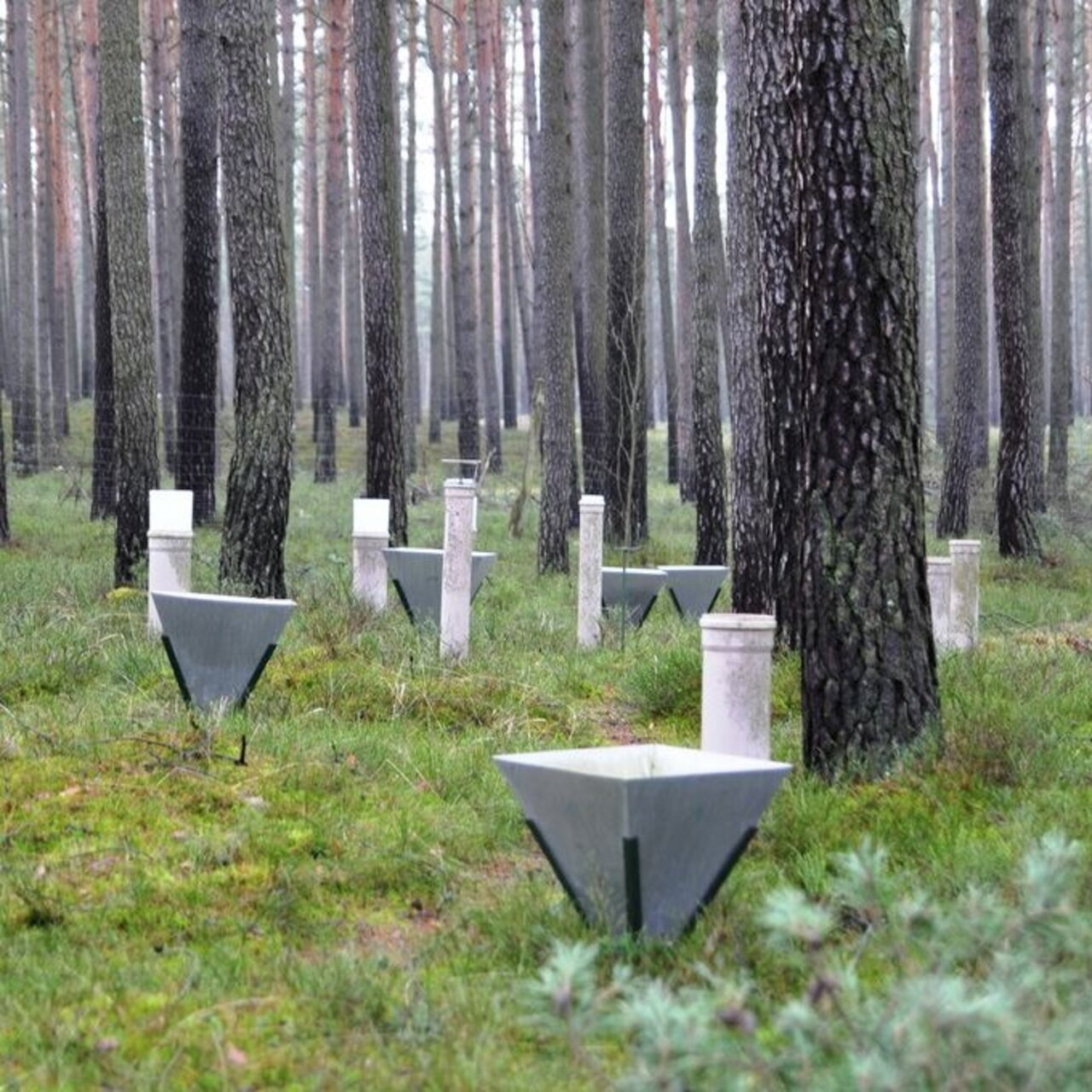Project
Level II

Intensive Forest Monitoring - Level II
The Intensive Forest Monitoring (Level II) is performed within selected forest sites (case studies). Data on relevant parameters is collected periodically or even continuously in order to describe status and development of forest ecosystems.
Background and Objective
The Level II monitoring is complementing the area-representative Level I monitoring (Crown condition assessment (WZE) and Soil survey (BZE)). It is part of the International Co-operative Programme on the Assessment of Air Pollution Effects on Forests (ICP Forests) under the umbrella of the Convention on Long-range Transboundary Air Pollution (CLRTAP). Established since the 1990s the permanent plots hold a variety of equipment to perform ecosystem-related studies on cause-effect relationships. In Germany data is collected on 68 sites for in total 14 surveys, partly in high temporal resolution. Data is quality checked, and fed into a data base at the PCC of ICP Forests. These activities performed by the German federal states are covered by a federal regulation based on the federal forest law since 01/01/2014. The collected data are internally evaluated and provided for national and international studies. At the moment in- and output studies of forest ecosystems are performed. Standard evaluation routines are developed as well.
Approach
The German federal states collect the data according to a internationally homogenised manual within the following surveys: crown condition, increment, foliar element concentrations, litterfall, phenology, visible ozon injuries, ground vegetation, deposition, meteorology, soil solution and soil solid phase. Quality checks are also perfomed after the manual. Gap replacement as well as the application of canopy flux models are applied according to adequate process-related models. Inference statistics are for crown condition, increment, foliar element concentrations or ground vegetation as response variables and deposition, soil, climate-related variables, or soil parameters as drivers are performed at different temporal and spatial scales.
Thünen-Contact

Involved Thünen-Partners
Duration
Permanent task 1.1995
More Information
Project status:
ongoing
Contact
[Translate to English:] http://blumwald.thuenen.de/level-ii/allgemeine-informationen/ansprechpartner/
Publications
- 0
Ferretti M, Gessler A, Cools N, Fleck S, Guerrieri R, Jakovljevic T, Nicolas M, Nieminen TM, Pitar D, Potocic N, Raspe S, Schaub M, Schwärzel K, Timmermann V, Vejpustková M, Vesterdal L, Vanninen P, Waldner P, Zimmermann L, Sanders TGM (2024) Resilient forests need joint forces for better inventorying and monitoring. Forest Ecol Manag 561:121875, DOI:10.1016/j.foreco.2024.121875
- 1
Krüger I, Andreae H, Chmara I, Dietrich HP, Eickenscheidt N, Fleck S, Greve M, Haßdenteufel M, Henry J, Hölscher A, Martin J, Mundhenk P, Meesenburg H, Prescher A-K, Raspe S, Russ A, Schmitz A, Strer M, Talkner U, Zimmermann L, Sanders TGM (2024) Wandel und Beständigkeit des intensiven Umweltmonitorings. AFZ Der Wald 79(13):12-16
- 2
Rukh S, Sanders TGM, Krüger I, Schad T, Bolte A (2023) Distinct responses of European beech (Fagus sylvatica L.) to drought intensity and length - A review of the impacts of the 2003 and 2018-2019 drought events in Central Europe. Forests 14(2):248, DOI:10.3390/f14020248
- 3
Schmitz A, Sanders TGM, Bolte A, Bussotti F, Dirnböck T, Penuelas J, Pollastrini M, Prescher A-K, Sardans J, Verstraeten A, de Vries W (2023) Responses of forest ecosystems in Europe to decreasing nitrogen deposition. In: Du E, de Vries W (eds) Atmospheric nitrogen deposition to global forests : Spatial variation, impacts, and management implications. London: Academic Press, pp 227-245
- 4
Rukh S, Schad T, Strer M, Natkhin M, Krüger I, Raspe S, Eickenscheidt N, Hentschel R, Hölscher A, Reiter P, Sanders TGM (2022) Interpolated daily temperature and precipitation data for Level II ICP Forests plots in Germany. Ann Forest Sci 79:47, DOI:10.1186/s13595-022-01167-3
